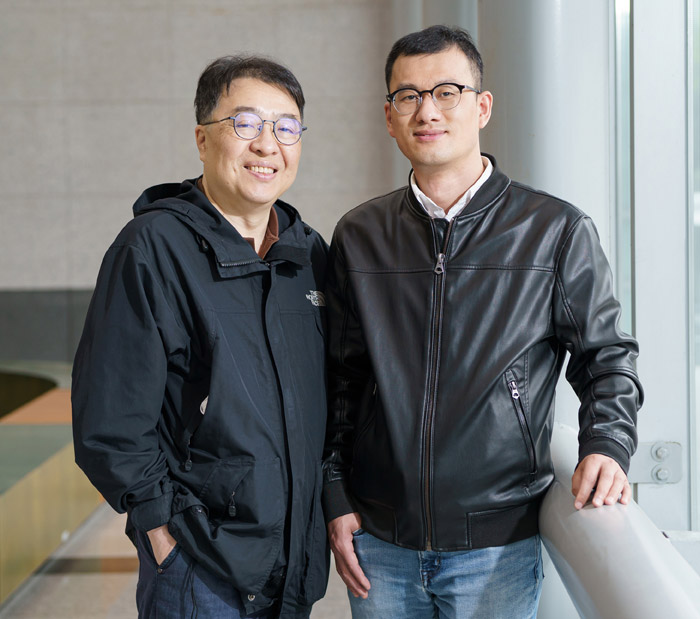Research Stories
Prof. Kang Dae Joon (Physics)enhancing output power density of polydimethylsiloxane flexible triboelectric nanogenerator
Nickel telluride (NiTe2) is considered a promising co-triboelectric material with PDMS
Physics
Prof.
KANG, DAE-JOON
Prof. Dong-Hwan Kim · Dr. Yongteng Qian
In collaboration with Professor Dong-Hwan Kim (School of Chemical Engineering), Professor Dae Joon Kang (Department of Physics)'s team has reported a novel approach to increase polydimethylsiloxane-based output power density flexible triboelectric nanogenerators using ultra-thin nickel telluride nanosheets as a co-triboelectric layer.
Flexible triboelectric nanogenerators (FTENGs) can harness various mechanical energies such as wind, water flow, and human motion for energy and sensing purposes; therefore, it was in the spotlight. In general, a critical factor that determines the electrical output behavior of FTENGs is the proper selection of active triboelectric materials. Among the many suitable triboelectric materials, polydimethylsiloxane (PDMS) is considered an excellent material for FTENGs due to its good mechanical strength, high flexibility, and excellent electron negativity. However, the output power density of PDMS-based FTENGs remains unsatisfactory.
Inorganic materials such as metal sulfides, semiconductingmetal oxides, metal-organic frameworks, and MXenes could be explored as activeco-triboelectric materials in combination with PDMS due to their high chemicalstability, excellent mechanical strength, and high electrical conductivity.Among the many novel inorganic materials, nickel telluride (NiTe2) is considered a promising co-triboelectric material with PDMS due to its goodconductivity, high chemical stability, good mechanical strength, and facilesynthesis. Moreover, highly conductive NiTe2 can effectively lower the internalresistance of PDMS, further improving the output performance of PDMS-basedFTENGs. In addition, the nano-belt (NB) can be considered a promising platformfor designing high-performance energy collection devices due to its uniquemorphological advantages of higher aspect ratio, larger surface area, moreenergy collection sites, and faster charge transfer rate compared to many otherform factors.
Therefore, the team used NiTe2 NBs as a co-triboelectric material with PDMS to further improve the output performance of PDMS-based FTENGs. The team systematically investigated their triboelectric performance in terms of the weight ratio of NiTe2 NB to PDMS, the device's size, the thickness of PDMS, and the temperature dependence of their output power. As a result, the optimized PDMS/5% NiTe2 NB FTENGs produced a remarkable output power density of 1.89 mW cm-2 and excellent flexibility. Moreover, these FTENGs with a size of 1 cm2 and 9 cm2 could instantly power 70 and 150 LEDs, respectively, under the periodic vertical force of a human palm tapping. Our results show that NiTe2 NB is an excellent co-triboelectric material with PDMS to achieve high-performance PDMS-based FTENGs.
This research was supported by the BK21 Four Program and published in Nano Energy (IF = 17,881), one of the leading journals on nanomaterials and nanodevices for energy harvesting and conversion.
Paper title:
Enhancing the output power density of polydimethylsiloxane-based flexible triboelectric nanogenerators with ultrathin nickel telluride nanobelts as a co-triboelectric layer


